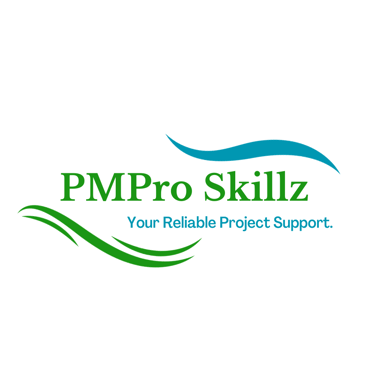A Comprehensive Guide to Achieving Effective Scope Definition
Defining the scope of your project is one of the most critical steps you'll take during the initiation phase. Getting the scope right sets the stage for success, while a poorly defined scope is a recipe for scope creep, budget overruns, missed deadlines, and frustrated stakeholders. In this article you'l learn proven strategies and techniques for clearly defining project scope to avoid common pitfalls.
Iyanna Trimmingham
9/9/20235 min read


In the dynamic world of project management, one of the fundamental cornerstones of a successful project is often overlooked or treated with less importance than it deserves - project scope definition. After over a decade managing complex projects, I've learned that clearly defining scope is a make-or-break factor for success. I've seen too many projects spiral into chaos because the team lost sight of the end goal halfway through. Vague objectives open the door for misalignments that derail timelines and bust budgets.
I get it - scope definition requires patience and attention to detail that can seem tedious when you just want to jump into execution. But hold your horses! That upfront alignment pays dividends when you've got a clear purpose to guide decisions down the road.
Trust me, it’s worth taking the time to gather detailed requirements, craft objective scope statements, and get stakeholder sign-off. Doing so gets everyone on the same page from the start. It's like giving your team a GPS versus vague directions for their journey.
Project scope definition sets the boundaries, expectations, and goals for your project. Without a well-defined scope, your project can quickly spiral out of control. Defining the scope of your project is one of the most critical steps you'll take during the initiation phase. Getting the scope right sets the stage for success, while a poorly defined scope is a recipe for scope creep, budget overruns, missed deadlines, and frustrated stakeholders.
Tips and Techniques for Project Scope Definition
So, how can you master the art of project scope definition? Here are some tips and techniques that will help you navigate this critical phase of project management.


Know Your Goal and Objectives: Before diving into scope definition, take a step back to clarify the goals and objectives of your project. Ask yourself:
What is the Purpose of this Project?: A well-defined goal statement clearly captures the desired end state after project completion. It should align to strategic business objectives and address a specific need or problem to be solved.
What Are the Key Objectives?: Objectives are measurable outcomes that allow you to track progress towards achieving the goal. Effective objectives use SMART criteria:
Specific
Measurable
Achievable
Relevant
Time-bound
With clear goals and objectives, you can define project scope in the proper context.
Gather Requirements from Stakeholders: Your stakeholders are a rich source of information as you define scope. Schedule interviews with key stakeholders to uncover business needs, user requirements, functional elements, and priorities. Use these tips for gathering complete, high-quality requirements:
Ask Probing Questions: Go beyond superficial responses to understand expected features, system capabilities, deliverables, and success metrics. Ask follow-up questions until you reach specificity.
Listen More Than You Speak: Let stakeholders share their needs and wishes without interference. You’ll get more candid input if you avoid leading questions.
Document the Conversation: Take detailed notes, summarize key points, and document areas of alignment/disagreement. Accurate documentation trails are invaluable.
Look for Common Themes: Identify overlapping requirements and priorities that present core elements to include in your scope definition.
Validate Your Understanding: Restate what you heard in your own words and have stakeholders confirm. This avoids misinterpretations. Thorough stakeholder research gives you the raw material for crafting a detailed scope definition.
Define Your Scope with Specific Deliverables: Now it’s time to synthesize your findings into a well-structured scope definition. Your scope statement should include:
Business Needs: Succinctly explain the business needs/problems to be addressed by the project.
Major Deliverables: List the tangible outcomes to be produced during the project (e.g. software system, new process, etc.)
Project Phases: Outline the essential phases and activities involved in project execution.
Milestones: Note major milestones that mark achievement of key objectives.
Cost and Time Estimates: Provide rough estimates of budget requirements, timeframe, and resource needs.
Success Criteria: Define quantitative metrics that indicate successful project completion.
Exclusions: Note what's not included in scope to avoid scope creep.
Assumptions: List any assumptions that influence your scope definition.
Follow these best practices when drafting your scope statement:
Constraints: Identify limitations around resources, budgets, timelines, etc. that constrain the scope.
Use Specific, Objective Language: Avoid vague, general statements that lead to misinterpretations. Be precise.
Find the Right Level of Detail: Include enough specifics without getting excessively detailed. Err on the side of inclusiveness.
Focus on Deliverables Over Tasks: Defining every single task is unnecessary. Focus on articulating deliverables.
Write Concisely: Keep scope statements as lean as possible while sufficiently comprehensive.
Use Structured Formatting: Organize scope information using consistent headers.
Leave Wiggle Room: Avoid absolutes if requirements might evolve. Use words like “approximately” or “about.”
With an excellent scope statement in hand, you're ready to execute the project with clarity. But first, validate your scope definition through stakeholder reviews.


Validate Scope with Stakeholders: Before finalizing your project scope, conduct stakeholder reviews to confirm alignment. Walkthrough your scope statement and supporting documents, asking:
Does this accurately reflect your requirements?
Are there any gaps I should address?
Do you foresee any issues with the scope as defined?
Be prepared to refine the scope based on feedback. Also secure formal sign-off from key stakeholders to lock in agreement. To facilitate alignment, share the scope documentation using these best practices:
Host Face-to-Face Reviews When Possible: In-person meetings enable richer discussion and immediate clarification.
Keep Reviews Focused: Avoid scope creep by sticking to defined parameters during reviews.
Address Differences of Opinion: Mediate disagreements through transparency and active listening.
Update Documents After Reviews: Incorporate feedback, get approvals, and distribute updated scope docs.
Use Version Control: Save iterative versions to track scope changes and avoid confusion.
With stakeholder validation, you gain confidence that your scope definition accurately captures project objectives, deliverables, and requirements.
Control Scope Changes with a Formal Process: Even with robust validation procedures, changes to scope are inevitable. Scope creep threatens budgets, timelines, and sanity. Combat creep by establishing a formal change control process that includes:
Change Request Forms: Require stakeholders to submit proposed changes in writing using a standard template.
Impact Assessment: Analyze potential effects of requested changes on cost, schedule, quality, and resources.
Change Approval Board: Require approval from a cross-functional team empowered to accept or reject changes.
Updated Scope Statement: Upon approval, update the scope statement and supporting documents.
Scope Creep Log: Document all requested changes to facilitate tracking.
By controlling changes through a rigorous process, you can incorporate necessary modifications without introducing unnecessary scope creep. Scope changes will slow momentum, so avoid “scope drift” where loosely approved alterations gradually expand the scope. Re-validate the entire scope at project milestones to realign all stakeholders if drift occurs.


Key Takeaways
Defining and controlling project scope is challenging but critically important. Summarizing key learnings:
Involve stakeholders early through interviews and requirements gathering.
Draft a complete scope statement focused on major deliverables.
Validate scope with stakeholders before finalizing.
Control changes through a formal change process.
Continuously monitor scope drift and realign as needed.
After all these years managing projects, I wish I could tell you there's some magic shortcut for flawless scope definition. But, it all comes down to setting clear objectives, involving stakeholders, defining deliverables, identifying constraints, and effectively managing scope changes. It may sound like a boring drawn out process but I promise, putting in the work early on pays back tenfold when you steer clear of the headaches that come with a fuzzy scope. Sure, scope might shift as things progress. That's just reality. But having clarity from the start makes course correcting smoother sailing.

